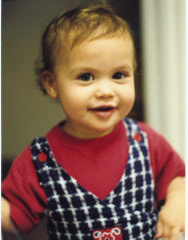Ideally, when a child is diagnosed with a brain tumor, a multidisciplinary group of providers (neurosurgeons, neuropathologists, neuro-radiologists, neuro-oncologists, etc.) cooperate to determine the optimal treatment. Many factors influence the decision. Central to considerations are the classification, grading, and staging of pediatric brain tumors.
With the exception of only a few tumor types and locations, most brain and spinal cord tumors are approached surgically. This can: relieve the mass effect of the lesion: in some cases, provide a curative total resection; and, obtain tissue for the pathologist from which the type of tumor (“tumor classification”) and the degree of malignancy (“tumor grading”) can be determined. Before treating children with brain tumors, the neoplasms are generally evaluated by the neuro-oncologist, radiologist, and often the pathologist to determine both the size and extent of the lesion, including evidence of tumor spread to other parts of the nervous system or to other parts of the body (“tumor staging”).
Tumor Classification and Grading
Tumor classification is done by the pathologist’s microscopic examination. In concept, brain tumors arise from different normal cells of the brain and spinal cord and the resulting neoplasms are designated accordingly. A large group arises from a class of cells known as glia that include the ependymal cells, astrocytes, and oligodendrocytes (the respective neoplasms are ependymomas, astrocytomas, and oligodendrogliomas). (The suffix “-oma” indicates a mass or tumor). For glial tumors, tumor classification is achieved initially by assigning the lesion to one of these groups. The lesion is then placed among subsets of these groups. Thus, astrocytomas will be further subdivided since the term “astrocytoma” is non-specific as it includes different lesions of varying degrees of biological aggressiveness and potential cure. A common type of astrocytoma in children is “pilocytic astrocytoma,” known for its slow rate of growth and, in many cases, surgical cure. Other forms of astrocytomas, e.g. the “fibrillary” types, infiltrate surrounding tissues and are more difficult to contain. A common additional class of brain tumors in children is the “embryonal” or “PNET” groups. The cerebellar medulloblastoma is the most common example.
After the lesion is “classified,” the pathologist’s job is to estimate the degree of malignancy by tumor grading. This is done also by review of microscopic features, among which the number of dividing tumor cells (“mitoses”) is commonly studied. Other histologic features are applied variably as well. A numerical system is used, with aggressive lesions being given a higher number, indicating a higher grade. In some cases the grade is implicit in the name, i.e. pilocytic astrocytomas are Grade I. The more diffusely infiltrating so called “fibrillary” lesions fall along a spectrum of Grade II, III, and IV. Grade II refers to the “fibrillary astrocytoma”, whereas the astrocytoma grade IV lesions is the most malignant form i.e. glioblastoma multiform. The Grade III “anaplastic astrocytoma” is intermediate. Some tumor types (e.g. medulloblastoma) are always considered high grade but do not carry a specific numerical designation.
Spinal Cord Tumors Tumor Staging
Tumor staging determining the extent of tumor spread begins in the pre-operative period. Certain information will be determined based on the scans obtained before the operation (e.g. where is the tumor located?, Is there evidence of multiple lesions?, is the tumor potentially resectable?). At the time of the operation, the neurosurgeon provides additional information including an assessment of the extent of tumor resection. Certain tumors require a limited evaluation beyond the region of the tumor, whereas other tumors require a careful evaluation of multiple locations where the tumor might spread. In general, glial tumors usually remain in the central nervous system (brain and spinal cord), and do not spread to other parts of the body. For tumors of glial origin, tumor staging may only involve determining if there is evidence of spread to the spinal cord. This is generally accomplished by obtaining an MRI of the spine. For certain tumors, the evaluation for possible spinal spread also includes a lumbar puncture (spinal tap). A small amount of fluid is removed and analyzed for the presence of tumor cells. Certain brain tumors, such as medulloblastoma, can be spread to the spinal cord and additionally spread beyond the central nervous system, although this is rare. If there is evidence to suggest the possibility of spread, then additional studies besides evaluating the spinal column for disease may be indicated. The clinician would provide information about the exact studies required for staging. Of note, certain studies such as the MRI of the spine, may need to be delayed following surgery. This delay is designed to be certain that abnormalities noted on the scan do not represent surgical “artifacts” such as blood from the time of the operation.
It is only following tumor classification, grading and staging, that the clinician can provide a family with a complete picture concerning prognosis and treatment options.
Peter C. Burger, MD and Kenneth J. Cohen, MD
REVISIONS COMING SOON.
Dr. Peter C. Burger is Professor of Pathology, Neurology and Oncology, Johns Hopkins University School of Medicine and is one of the world’s leading authorities on tumors of the central nervous system. Dr. Burger is co-author of the “atlas of Tumor Pathology, Tumors of the Central Nervous System,” and has authored two major textbooks on central nervous system tumors. Currently, 2004, he chairs the Pathology Review Committee of the Pediatric Oncology Group. He voluntarily serves as on the medical advisory for the Childhood Brain Tumor Foundation.
Dr. Cohen is the Director of the Pediatric Neuro-Oncology Program at Johns Hopkins and an Assistant Professor of Oncology and Pediatrics at the Sidney Kimmel Comprehensive Cancer Center at Johns Hopkins. Dr. Cohen serves as the institutional Principal Investigator for all in-house pediatric brain tumor trials. He is an active member of the Children’s Oncology group (COG) and is a member of the brain tumor Committee of the COG. He is the national PI of the current high-grade glioma trials within the COG. Dr. Cohen’s primary interest is in the development of novel therapeutics for children with brain tumors. He voluntarily serves on the medical advisory for the Childhood Brain Tumor Foundation.

 Amy, Always Remembered
Amy, Always Remembered